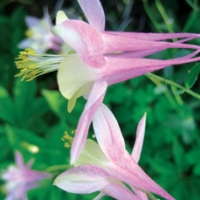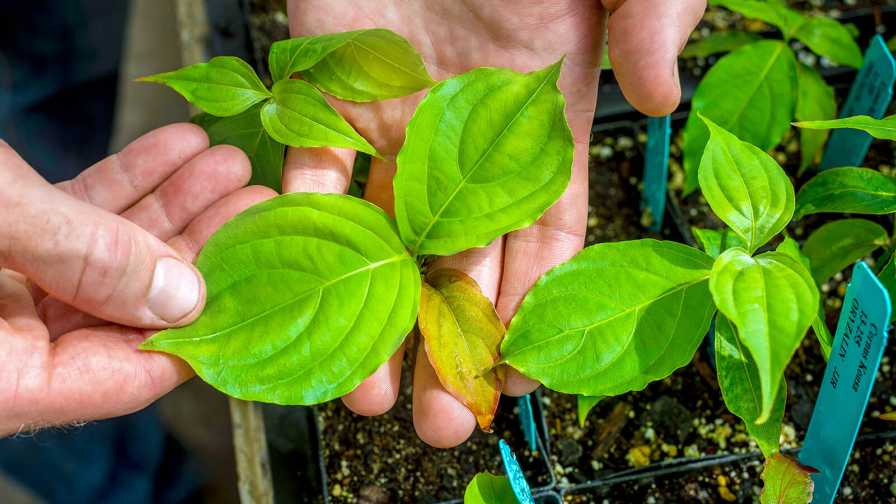Native Plants: Which Should You Offer?

Of all the niches within the perennial market, natives currently rank among the most intriguing and sought-after. Ironically, and perhaps unnecessarily, natives are also misunderstood and even considered problematic.
Growers, retailers and gardeners want natives, but which ones? How do you grow them? Well, consider this: If you offer a decent perennial selection, you’re already into natives.
All species of phlox, most gaillardia and all echinacea, to name just a few genera, are natives. Foreign variety names like rudbeckia ‘Goldsturm’ or carex ‘Oehme’ may deceive, but North America is the ancestral home of these and many other famous perennials, like most coreopsis (some hail from Africa) and all stokesia.
Since colonial times, Old World collectors have plundered the Americas for botanical treasures, sending them abroad for education, breeding and selecting. So much for the myth that natives are just for restoration work and meadows.
For growers undecided about which natives to offer, or which of their current offerings qualify as natives, there’s the Native Wonders collection by Emerald Coast Growers. These 41 perennials and 27 grasses were chosen not just for provenance, but for real garden merit and ornamental value.
“When selecting our Native Wonders program, we considered the retailer’s and homeowner’s concerns: Buy native and grow beautiful plants,” says Emerald Coast’s Cheri Markowitz.
Perennials
An amicable schism surfaces whenever the Perennial Plant Association elects a Perennial Plant of the Year. Some members prefer recent introductions relevant to today’s market. That element held sway when heuchera ‘Palace Purple’ and geranium ‘Rozanne’ won in 1991 and 2008, respectively. Each was known in the industry but still unfamiliar to gardeners and many retailers.
Others prefer worthy but overlooked plants. Those voices prevailed with Baptisia australis (2010) and Amsonia hubrichtii (2011). Both are fine garden choices–and natives. Because “new native” is an obvious oxymoron, clearly merit–not novelty–prompted their selection.
Perhaps we’re skeptical of novelty: Some wonderful new perennials prove neither wonderful, nor perennial. When an annual disappoints, it’s over in a season. When perennials fail, it feels like a betrayal. Natives, the common wisdom says, enhance the odds for success: After all, they evolved here in our climate and in harmony with surrounding flora and fauna.
Back to amsonia: Detractors scoff that A. hubrichtii blooms for about 20 minutes each spring, looks sparse and unkempt in pots and establishes slowly in the landscape, coming into its own in the second year. So why is it the 2011 Plant of the Year? How do you grow and sell it?
Easy: Grow it for its unmatched foliage, a backdrop that brings movement to the border. Slender leaves on erect stems sway gracefully in the vaguest hint of a breeze; cold nights paint them a dazzling yellow/gold. Plant by July to bulk roots for fuller pots next spring.
Aquilegia canadensis. This perennial blooms early and makes a cute pot, and it’s irresistible on the retail shelf. There are selections like ‘Corbett,’ ‘Little Lanterns’ and ‘Pink Lanterns,’ but it’s hard to beat the vivid red petals and gold stamens of the species.
Latin names hold clues to nativity. Specific epithets like americana, canadensis, and pensylvanica are obvious while others are more obscure: novi-belgii means “of New Belgium,” an old name for New York. Australis, as in baptisia, conjures kangaroos, but it really just means “southern.”
Asclepias. The common name “milkweed” does this genus a disservice. The popular A. tuberosa, butterfly weed, produces beautiful orange flowers, invaluable to Monarch butterflies. ‘Hello Yellow’ and ‘Gay Butterflies’ offer yellows, oranges and near-reds. Less familiar but equally worthy is A. incarnata, swamp milkweed, which is great for naturalizing, happy at water’s edge and a durable cut flower.
In 1998, garden center gurus mocked the PPA for selecting Echinacea purpurea ‘Magnus’ because it’s so obviously unsuited to our current regrettable retail display model. True, some types get leggy in gallons before blooming. But recent selection Prairie Splendor flowers early, at half the height. Newcomers like the Big Sky and ConeFection series offer wild new colors and forms that nature never got around to.
Lewisia cotyledon. This is an adorable windowsill crop, popular in Europe in 4 ½-inch pots. Tough, tolerant and semi-succulent, it bears cute-striped flowers, mostly pastel shades. Sow it late in the year, as cold treatment yields the best germination, or play it safer with liners. In nature, lewisia (a.k.a. bitterroot) grows in scree, often at high altitudes. That’s a clue: Don’t kill it with kindness. Water sparingly and use well-drained media.
Polemonium reptans. ‘Touch of Class’ an improved selection from ‘Stairway to Heaven’, brightens up shady areas with crisp, white-edged foliage. You can’t sow it, but it’s readily available in liners. Protect it from full sun and keep it moderately moist.
Grasses
Carex pensylvanica is not a showy grass and not a specimen, but it naturalizes shady areas, forming a slow-spreading, self-sufficient lawn you needn’t mow. At retail, don’t display it near tall grasses like panicum or muhlenbergia. Put it with your groundcovers as a turf alternative. C. muskingumensis ‘Oehme’ is a beautiful, underused variegated form discovered in Maryland. It’s versatile, happy in containers, mixed beds or at water’s edge.
Panicum is a genus whose time has come. More tough, beautiful varieties enter the trade each year. For a good range of colors and sizes, try ‘Northwind,’ ‘Heavy Metal,’ ‘Dewey Blue,’ Ruby Ribbons or ‘Shenandoah.’
Schizachyrium scoparium (little bluestem) is still sold as andropogon (big bluestem) by some holdouts despite a taxonomical split in the 1960s. Both andropogon and schizachyrium are prized for restoration plantings due to their ability to thrive in compromised soils, but don’t overlook their pretty side.
The name “bluestem” is inadequate. Grab a fistful of schizachyrium ‘Blaze’, especially in fall, and you’ve got a rainbow in your hand, from glaucous blues to smoldering reds and oranges. Try Blue Heaven also.
The bottom line: Stop stressing over natives. Purists will quibble, but if you’re growing gaura, lobelia or monarda, you’re already a native plantsperson. Welcome to the tribe.









